Amazon
In it’s infinite wisdom, the Amazon affiliate program recently eliminated all types of generic and logo links as well as product-specific links such as those formerly featured on the Great (Photographic Accessory) Stuff tab here (and above on the orange-yellow menu bar).
On this and most future blog posts, I will post an item that contains my Amazon Affiliate link. If you do not wish to purchase the item, you can help support the work that I do here by clicking on the link and then continuing to shop. Please consider making it a habit of visiting the blog before you do your Amazon shopping online. Great news: it will not cost you a penny more, works great with your Amazon Prime or Amazon Business accounts, and will be gratefully appreciated.
Surf Booties
When I might need to be walking in the water be it at Fort DeSoto, La Jolla Shores Beach, Nickerson Beach, or anywhere else, I always have a pair of surf booties on. The are comfortable, add a bit of warmth on cold days, keep your feet cool on warm days, prevent cuts from shells, broken glass, and the like, and give some degree of protection against sting rays.
I’d advise the 3mm thickness if you will be walking in warm water, or the 5mm thickness for cold water.
You can order a pair of surf booties by clicking here. They tend to run a bit small. I wear mine with socks. You do not need split toe booties.
Your Call?
Which of today’s three featured images is your favorite? All are invited to leave a comment letting us know why they made their choice. I will share my fave here soon.
Save Flying Tip
Whenever I fly, I make sure to tip the bathroom attendant in the airport. I do it for good luck. So far, I have a perfect record of safe flights. If the plane crashes, the two bucks will not do me any good anyway!
What’s Up?
A day late by not a dollar short, I flew to San Diego on the afternoon Alaska Airlines non-stop from Orlando. I picked up my rental car and headed to my AirBnB in Clairmont Mesa. I was in bed by 9pm 🙂
Wherever you are and whatever you choose to do, I hope that you too have a great day. My late Mom would not be shocked to learn that I am headed out early to photograph pelicans! If you are interested in joining me for an In-the-Field Instructional Session in San Diego this month, please get in touch ASAP either via e-mail or by calling or texting my cell at 863-221-2372. I was thrilled to learn recently that two folks signed up for San Diego #2. Both are first timers: Jeanette LaPorte and Tom Baker. It is not tool late to sign up for either IPT and be ensured of almost private instruction. Get in touch as above to learn of the couples of late registration discounts.
Please remember to use the B&H links that are found on most blog pages and to use the BIRDSASART discount code at checkout when purchasing your new gear from Bedfords to get 3% back on your credit card and enjoy free second-day air FedEx. Please, also, consider joining a BAA IPT. You will be amazed at how much you will learn!
If an item — a Delkin flash card, or a tripod head — for example, that is available from B&H and/or Bedfords, is also available in the BAA Online Store, it would be great, and greatly appreciated, if you would opt to purchase from us. We will match any price. Please remember also to use my B&H affiliate links or to earn 3% cash back at Bedfords by using the BIRDSASART discount code at checkout for your major gear purchases. Doing either often earns you free guides and/or discounts. And always earns my great appreciation.
|
|
|
This image was created on 3 January 2023 on the cliffs at La Jolla. Standing at full height, I used the handheld Sony FE 70-200mm f/2.8 GM OSS II lens with the Sony FE 1.4x Teleconverter (at 280mm) and The One, the Sony Alpha 1 Mirrorless Digital Camera.. The exposure was determined via Zebras with ISO on the Thumb Dial. ISO 1250: 1/2500 sec. at f/4 (wide open) in Manual mode. When evaluated in RawDigger, the raw file brightness was determined to be perfect. AWB at 9:51:30am on a cloudy drizzly morning. Tracking: Expand Spot/AF-C with Bird-Eye/Face Detection performed perfectly. Click on the image to enjoy a high-res version. Image #1: Brown Pelican Pacific race adult looking over the back of a juvenile |
Float or Sink?
Does Image #1 float your boat or would it be an insta-delete for you? Note — this was not a photobombing; I got just what I was after.
Tip
In situations like this, whatever system you are using, you will surely want to avoid using any type of Zone AF pattern or method. Sony’s tracking with Expand Spot is so good that I will only rarely move the AF point around the frame as needed. I can start with the point in the middle — the system will continue to track the eye of the bird in the rear as I move the lens to re-compose. Most systems will have something similar.
|
|
|
This image was created on 4 January 2023 on the cliffs at La Jolla. Standing at full height, I used the Robus RC-5558 Vantage Series 3 Carbon Fiber Tripod/Levered-Clamp FlexShooter Pro-mounted Sony FE 400mm f/2.8 GM OSS lens and The One, the Sony Alpha 1 Mirrorless Digital Camera). The exposure was determined via Zebra technology with ISO on the Thumb Dial. ISO 640. 1/4000 sec. at f/2.8 (wide open) in Manual mode. When evaluated in RawDigger, the raw file exposure was determined to be dead-solid perfect (ho hum). AWB at 9:10:05am on cloudy bright morning. Tracking: Zone/AF-C with Bird Face/Eye detection enabled performed to perfection. Be sure to click on the image to enjoy a high-res version. Image #2: Brown Pelican Pacific race sub-adult braking to land |
Killer for Flight
It is hard to believe that I was dead-set again the 400mm f/2.8 lens for so many decades. Now, I handhold mine often for flight and action, especially in spots where the birds are relatively tame like La Jolla and Fort DeSoto.
In Image #2 I like that the breaking wave crossed the frame at the bird’s feet. If it had cut the bird’s head or body that would have been far less pleasing.
Of Note
First, note that even though I was using f/2.8, the wide-open aperture, the entire bird is sharp from the bill tip to the wing tips.
Second, note that the super-wide f/2.8 aperture allowed for a very fast shutter speed at a reasonable ISO despite the relatively low light situation. I can’t wait for the Sony 300mm f/2.8 to ship!
|
|
|
This image was created on 7 January 2023 on the cliffs at La Jolla. Standing at full height, I used the Robus RC-5558 Vantage Series 3 Carbon Fiber Tripod/Levered-Clamp FlexShooter Pro-mounted Sony FE 400mm f/2.8 GM OSS lens with the Sony FE 2.0x Teleconverter, and The One, the Sony Alpha 1 Mirrorless Digital Camera). The exposure was determined via Zebra technology with ISO on the Thumb Dial. ISO 640. 1/1250 sec. at f/5.6 (wide open) in Manual mode. When evaluated in RawDigger, the raw file exposure was determined to be less than 1/3-stop short of perfect. AWB at 8:09:41am on cloudy morning. Tracking: Expand Spot/AF-C with Bird Face/Eye detection enabled performed perfectly even at 800mm. Be sure to click on the image to enjoy a high-res version. Image #3: Brown Pelican Pacific race adult cleaning bill pouch |
Bill Pouch Cleaning
Pacifc-race Brown Pelicans seem to clean their bill pouches far more often than the pelican in Florida. Usually — but not always — while sitting down, they will lean their head back and pull the bill pouch over their folded neck while opening the bill. This is often an indication that a dramatic head throw is next.
Tracking: Expand Spot was the ticket to success as it did an excellent job of tracking the bird’s right eye. The AF point was actually a fraction of an inch above and a fraction of an inch to the right of the bird’s eye. At 12 meters, the total depth of field at f/8 at 800mm was 2.75 inches, well more than enough to cover the eye. As for the bill tip, you pretty much have to forget about it. An aperture of f/32 would yield a total dof of 15 inches, but utilizing that would be quite tricky.
|
|
|
San Diego offers a wealth of very attractive natural history subjects, including and especially the Pacific race of California Brown Pelican. With annual visits spanning more than four decades, I have lots of photographic experience there … Click on the composite to enjoy a larger version. |
The 2024 San Diego Brown Pelicans (and more!) IPTs
San Diego IPT #1: 4 1/2 DAYS: TUES 23 JAN thru the morning session on SAT 27 JAN 2024: $2699.00. Deposit: $699.00. Limit: 6/Openings 4.
San Diego IPT #2: 3 1/2 DAYS: WED 31 JAN thru the morning session on SAT 3 FEB, 2024: $2149.00. Limit: 6 photographers/Openings 4.
Please e-mail for information on personalized pre- and post-IPT morning sessions.
Join me in San Diego to photograph the spectacular breeding plumage Brown Pelicans with their fire-engine red and olive green bill pouches; Brandt’s (nesting) and Double-crested Cormorants; breeding plumage Wood and Ring-necked Ducks; other duck species possible including Lesser Scaup, Redhead, Northern Shoveler and Surf Scoter; a variety of gulls including Western, California, and the gorgeous Heermann’s, all in full breeding plumage; shorebirds including Marbled Godwit, Willet, Sanderling and Black-bellied Plover; many others are possible including Least, Western, and Spotted Sandpiper, Whimbrel, Black and Ruddy Turnstone, Semipalmated Plover, and Surfbird; Harbor Seals and California Sea Lions (both depending on the current regulations and restrictions). And as you can see by studying the IPT cards, there are some nice bird-scape and landscape opportunities as well. Not to mention a ton of excellent flight photography opportunities and instruction.
I discovered some really neat new spots on my 2022/23 visit. As a result, the first and second IPTs may include an afternoon or two of landscape photography.
Please note: where permitted and on occasion, ducks and gulls may be attracted (or re-located) with offerings of grains or healthy bread.
|
|
|
San Diego offers a wealth of very attractive natural history subjects, including and especially the Pacific race of California Brown Pelican. With annual visits spanning more than four decades, I have lots of photographic experience there … Click on the composite to enjoy a larger version. |
Learning Exposure, Whether You Like It Or Not
Whether you like it or not, we will be beating the subject of exposure like a dead horse. In every new situation, you will hear my thoughts on exposure along with my thoughts on both Nikon and Canon histograms and SONY Zebras. Whether you like it or not, you will learn to work in manual mode so that you can get the right exposure every time (as long as a bird gives you ten seconds with the light constant). Or two seconds with SONY zebras … And you will learn what to do when the light is changing constantly. What you learn about exposure will be one of the great takeaways on every IPT.
|
|
|
Though the pelicans will be the stars of the show on this IPT, there will be many other handsome and captivating subjects in wonderful settings. Click on the composite to enjoy a larger version. |
It Ain’t Just Pelicans
With gorgeous subjects just sitting there waiting to have their pictures taken, photographing the pelicans on the cliffs is about as easy as nature photography gets. With the winds from the east almost every morning, there is usually some excellent flight photography, at times with 70-200mm lenses! And the pelicans are almost always doing something interesting: preening, scratching, bill pouch cleaning, or squabbling. And then there are those crazy head throws that are thought to be a form of intra-flock communication. You will be guided as to how to make the best of those opportunities. Depending on the weather, the local conditions, and the tides, there are a variety of other fabulous photo chances available in and around San Diego. Each IPT will include one or two duck sessions.
|
Did I mention that there are lots of great birds and natural history subjects in San Diego in winter? Click on the composite to enjoy a larger version. |
The San Diego Details
These IPTs will include four or five 3-hour morning photo sessions, three or four 1 1/2-hour afternoon photo sessions, and three or four working brunches that will include image review and Photoshop sessions. On rare cloudy days, we may — at the leader’s discretion, stay out in the morning for a long session and skip that afternoon shoot. To ensure early starts, breakfasts will be your responsibility. And so that we can get some sleep, dinners will be on your own as well. In the extremely unlikely event that Goldfish Point is closed due to local ordinance (or whimsy) — that has never happened in the past fifty years, I will of course do my very best to maximize our photographic opportunities.
Deposit Info
A $699 deposit is required to hold your slot for one of the 2024 San Diego IPT. You can send a check (made out to “BIRDS AS ART”) to us here: BIRDS AS ART, PO Box 7245, Indian Lake Estates, FL, 33855, or call Jim or Jennifer at the office with a credit card at 863-692-0906. Your balance, payable only by check, is due three months before the trip.
|
Variety is surely the spice of life in San Diego. Click on the composite to enjoy a larger version. |
Getting Up Early and Staying Out Late
On all BIRDS AS ART IPTS including and especially the San Diego IPT, we get into the field early to take advantage of unique and often spectacular lighting conditions and we stay out late to maximize the chances of killer light and glorious sunset silhouette situations. We often arrive at the cliffs a full hour before anyone else shows up to check out the landscape and seascape opportunities.
Typos
With all blog posts, feel free to e-mail or to leave a comment regarding any typos or errors.

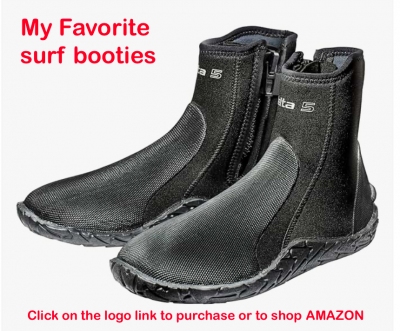
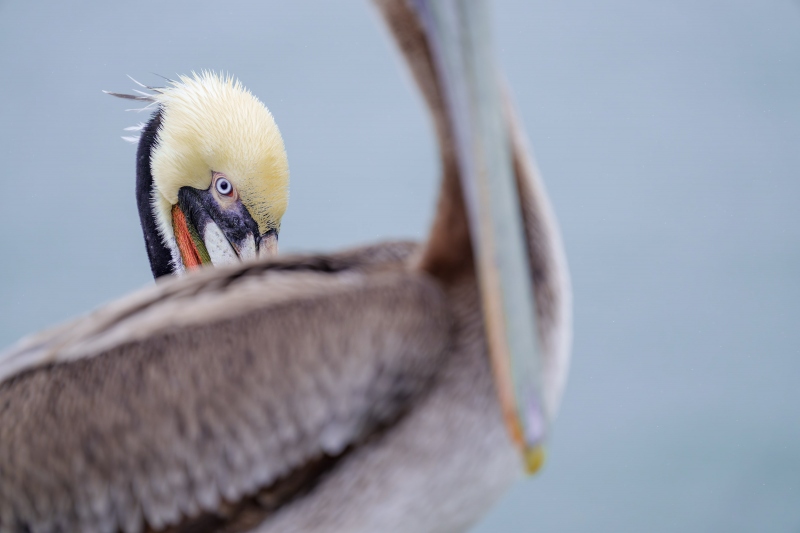
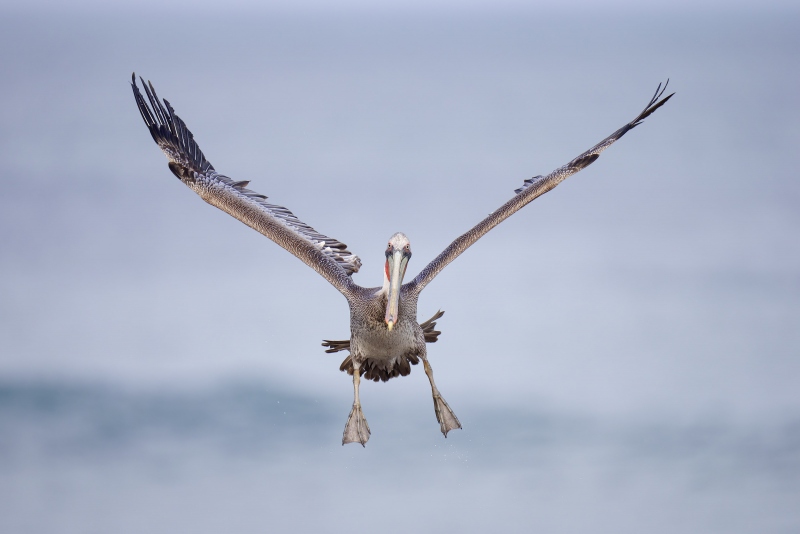
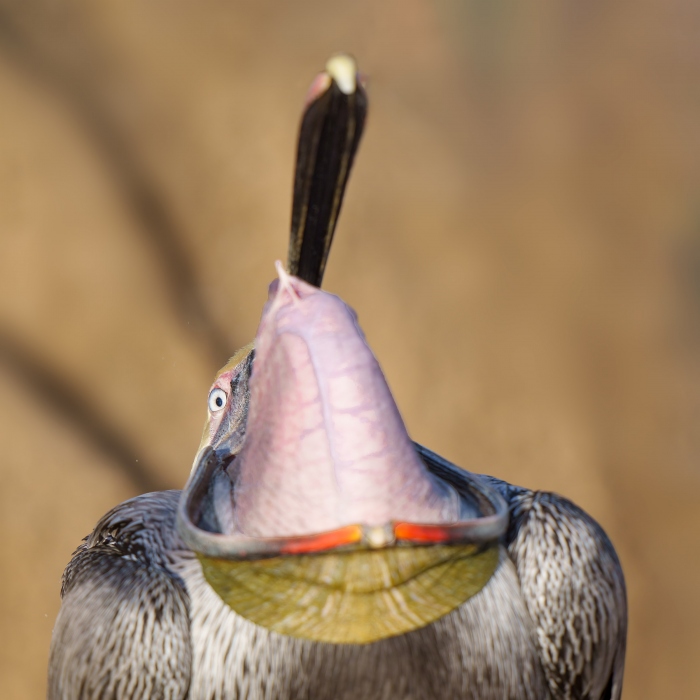
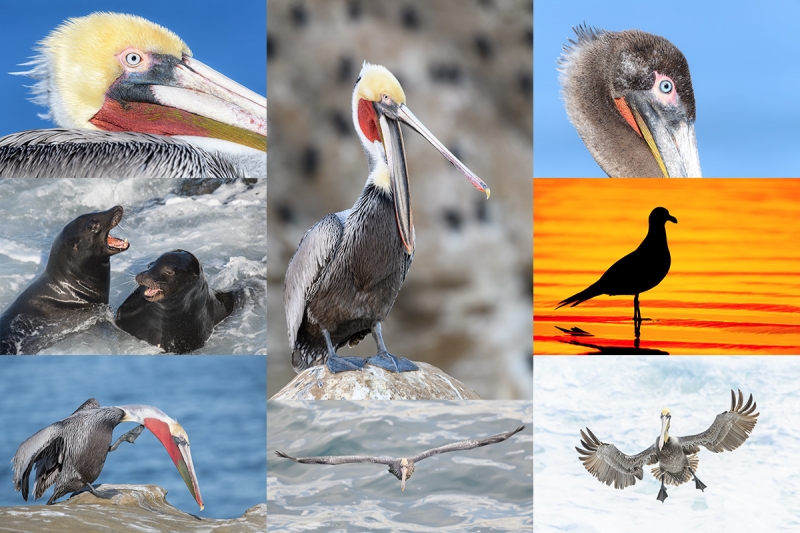
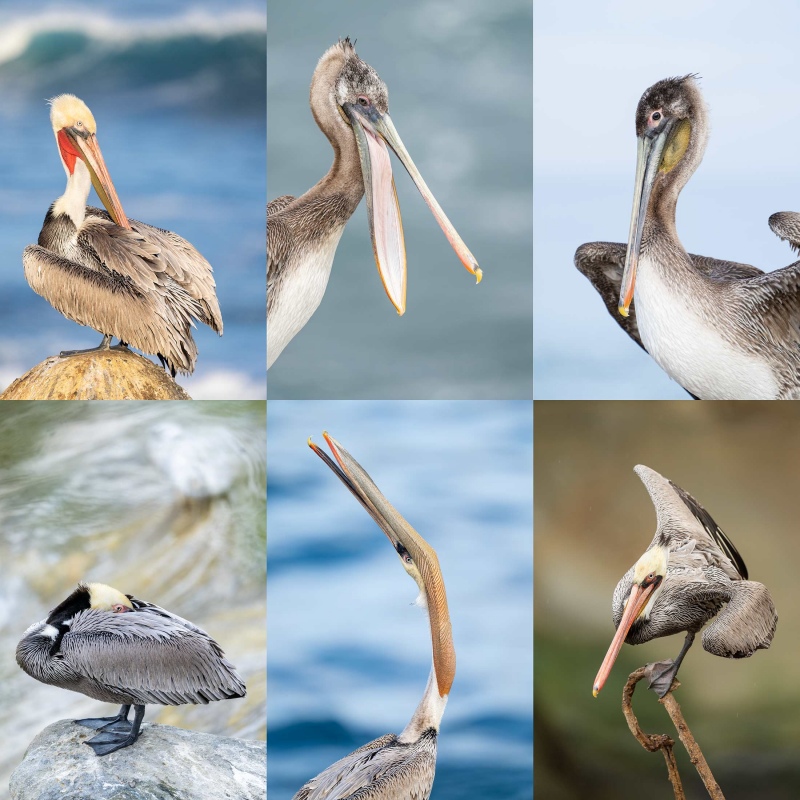
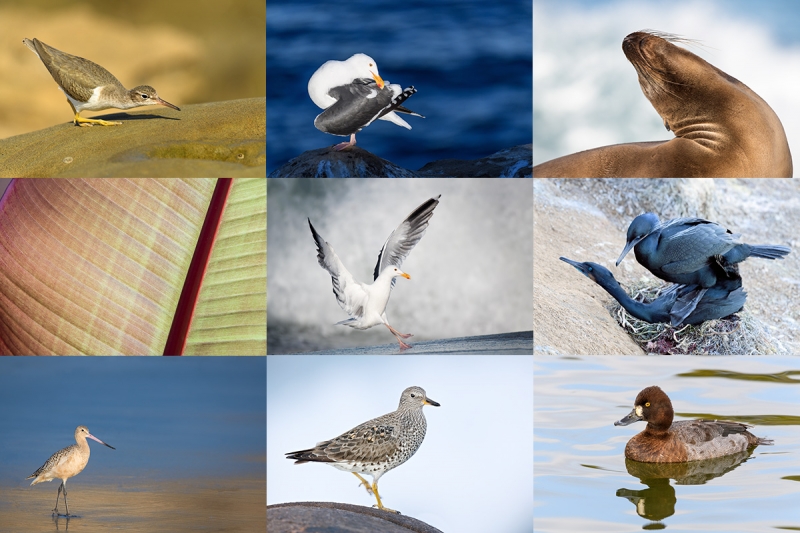















Good morning Guru. Hope you’re doing fine.
Read the review on the new sensation A9III as referred to by you. Yes, the image quality might be a suspect!
However, it solves one old issue i.e., EVF-lag which DLSR lovers have been talking about since long. It pretty much addresses the issue with the feature of pre-burst capture of one second’s data before actually starting the burst with full press of shutter. Brings the EVF at par with the speed of light i.e., OVF.
What do you think?
May I request one thing Guru? Would love to see few images you captured in monochrome picture style. Thank you.
Best regards.
Lot of interesting features that might or might not be great for bird photography. But as I already said, image quality will be the over-riding factor. The 51mp files allow for aggressive cropping.
I never do monochrome captures 🙂
a
Not a fan of these. #1 would be my pick, if I had to pick.
Thanks for leaving a comment. I will try to create better images.
with love, artie
Image #1 and #2 and #3 are interesting but image #1 is not as close as the other two images. And all the other images of many birds are also interesting and well made!